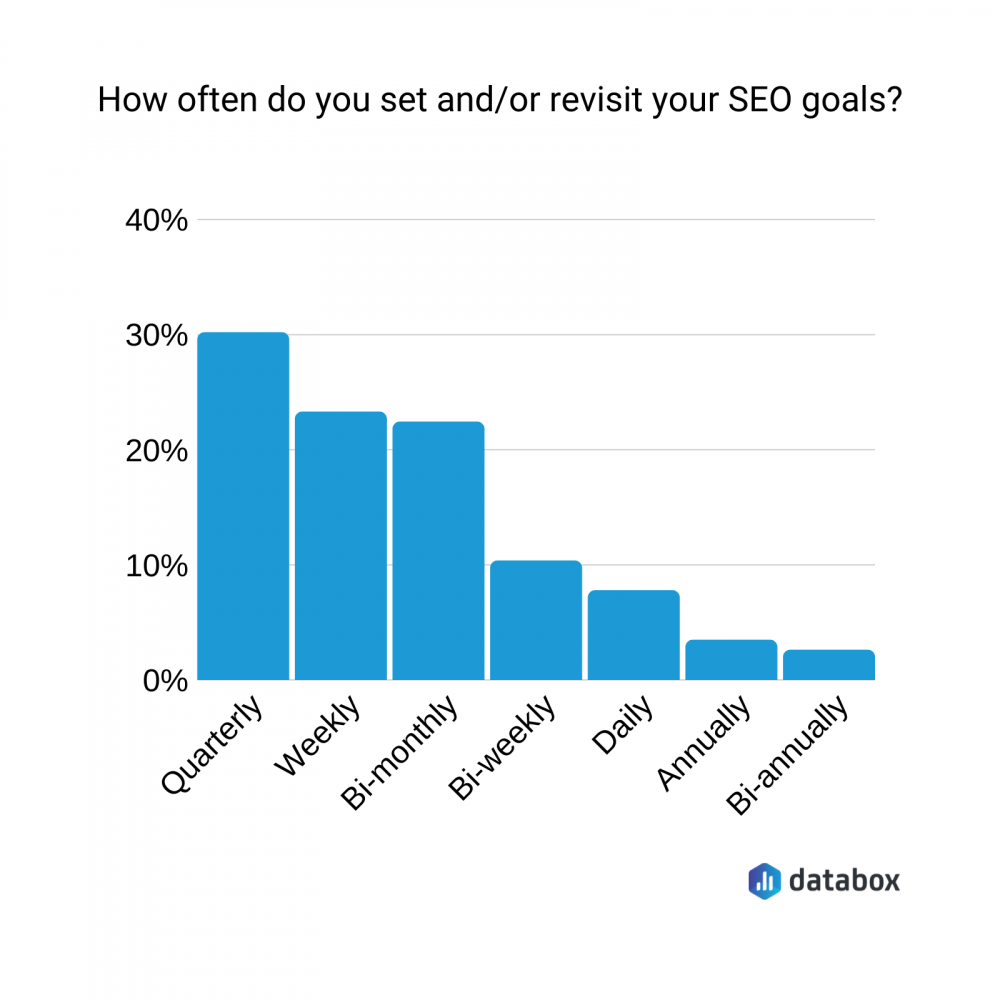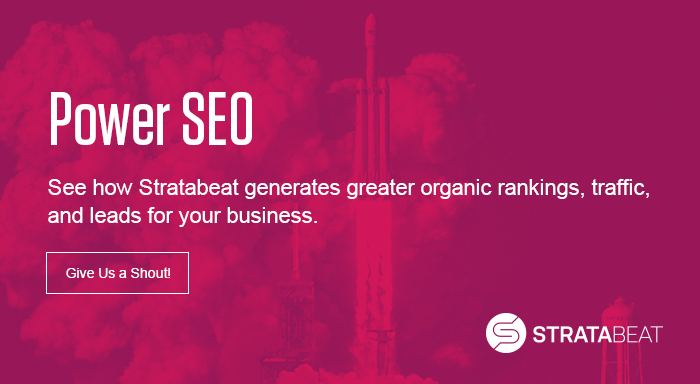How SEO Fits into Today’s Marketing

Real-time proximity marketing. Personalization. Artificial intelligence. Chatbots. Augmented reality and virtual reality. Attribution modeling. Interactive video.
Digital marketing is evolving. RAPIDLY!
Nowadays, marketers have many more options to reach and interact with their audience than even just a few years ago. Different tools and technologies allow you to manage, deliver, and optimize experiences across every digital touchpoint.
In that light, where exactly does B2B search engine optimization (SEO) fit in today’s hyper-fragmented marketing world?
SEO as Amplifier of Other Channels
B2B SEO is a great vehicle for capturing audience demand. If you sell analytics software, you can capture those looking for analytics software precisely at the time they are most interested and receptive, driving them to a corresponding experience on your website or landing page.
SEO in this sense is too often looked at in a silo, with dedicated staff, targeted programs, and individualized reports. However, more sophisticated marketers know that SEO’s true benefit extends way beyond rankings and organic search traffic based on a list of target keywords.
Here’s the beautiful secret. SEO boosts the performance of your investments in other marketing channels, as well. When SEO is done holistically, search plays an integral part of all of your marketing activities. Let’s take a look at how to use SEO in tandem with other digital strategies to maximize your marketing ROI.
SEO Along the Customer Journey
What are the best marketing practices now? What’s the cheapest flight to Miami? How to increase sales? Or how about that analytics software we were just talking about?
People search for all kinds of things all the time. A linear path, from first awareness of a problem to making a purchase to solve the problem, though, is rarer now. Digital technology and the ability to search for instant answers has fractured the customer journey into a series of micro touch points – Google calls them micro-moments and distinguishes between four main categories:
- The I-want-to-know moment
- The I-want-to-go moment
- The I-want-to-buy moment
- The I-want-to-do moment
Micro-moments are intent-driven, in-the-moment searches that can happen anytime, anywhere, and in any order across the buyer’s journey. The brands that offer the most relevant content along the way typically win.
SEO and content marketing should work together to deliver relevant content across all micro-moments. Take a look at different stages of your customer journey and layout the typical questions of your audience. When do people want to find inspiration, when do they want to learn about your products, when are they looking for social validation, when do they want to make a purchase? Map out these micro-moments and match your content around it. SEO has to optimize the content for each intent behind a user’s search.
The recent changes to Google’s SERP make the importance of micro-moments and search intent inevitable. To better reflect each micro-moment, Google tries to understand the intent behind a search query and shows different content – such as direct answers, Google maps, shopping ads or videos.
SEO as Part of Overall Marketing Messaging
SEO data can be an excellent source of market research, delivering valuable customer insights and behavioral data. Tools such as Google Trends, Google Insights, Google Correlate, Google Keyword Planner, and even Google News, give great insight into search patterns, user behavior, and relevance.
By looking at the search terms your customers use, you can better understand the way they think. For example, if you’re seeing your audience searching on “software,” then stop calling your offering a “solution.” Call it “software.” Based on this knowledge, you can change the language used on your home page, in your ads, in your direct mail, etc.
When writing for social, use the language your customers use as uncovered in your SEO research. When crafting a newsletter campaign, think SEO. When creating paid ads, think SEO. When planning an event, think SEO. Your SEO needs to be part of the DNA of all of these marketing activities in order for them to achieve maximum success. Use search to understand how your audience thinks, and then change your marketing messaging across the board to create a cohesive message that resonates with your customers along the entire funnel.
SEO and Branding
Ranking on the top of the search results not only increases clicks but also authority and trust. Users expect relevant results on Page One of results when they use search engines, thus, they automatically perceive the brands that rank at the top as credible resources. The more that your listings can dominate Page One, the more that your brand will appear to be a key player in the eyes of the searcher. In other words, even without any knowledge of your company, your people, your offerings, your expertise, your history, your locations, your clients or customers, etc., prospects automatically see more value in your brand simply by seeing a number of high ranking search results.
While nowadays many listings in the search engine results page (SERP) look similar, you can stand out in this sea of sameness by crafting Titles, Meta Descriptions, and URLs that are unique and more compelling than the others on the page. And click-through rate (CTR) matters more than ever. Google engineer Paul Haahr, in his presentation How Google Works: A Ranking Engineer’s Perspective By Paul Haahr, confirmed that the click-through rate (CTR) of a search listing impacts its positioning. And as CTR is a metric to improve your organic listing – it’s good for your brand and your ranking.
In fact, with every 3% increase in CTR of your organic listing in the SERP, your listing improves by an average of one position on the page. So, there’s extra value in standing out and increasing the CTR of your organic search listings – you get the initial click, and each such click then makes it more likely for higher positioning in the future, in turn increasing the likelihood of more clicks.
SEO for a Better Website
In an effort to make your website easier to navigate for the search engines, SEO forces you to take the time to organize the information in your site. By structuring better information architecture, you simultaneously create a better experience for the site visitor.
It’s important that the navigational flow for site visitors is intuitive. This makes it easier for search engines to crawl your site, but also for your site visitors to find relevant information while going deeper into your content. Through the use of navigational systems and internal links, you control the depth of your website. Search engines generally prefer when any page on your website can be reached with no more than a few clicks. So do your visitors.
In addition, search engines want your site to be mobile-friendly and can push your rankings lower, in fact, when it is not. On the experience side of things, if you’ve ever visited a website that was not mobile-friendly you know the pain of trying to get anything done while on the site. It makes you want to tear your hair out.
Ensuring your site is highly engaging for your visitors leads to higher organic search rankings. Higher engagement metrics positively impact your rankings, and this is especially true today with Google RankBrain influencing every single search. And by delivering a great user experience you can achieve higher conversion rates, more trust, and increased brand loyalty.
From a brand’s perspective, an integrated SEO approach forces your brand to take a deeper view of the content you are providing, how you structure it, and therefore requires a more holistic view of the customer journey.
SEO and Paid Search
Instead of cannibalization, often what you’ll find is that both organic and paid search benefit when both organic listings and paid ads are on the same SERP. One effective strategy for integrating SEO and paid search is to map the content you want prospects to consume at every stage in the funnel. Develop content to mirror their needs at every step along the journey, but strengthen and reinforce your presence throughout the funnel with paid ads.
Also, where paid ads are deathly expensive, develop a strategic plan to launch irresistible content to ultimately gain organic search rankings. Typically, this will not be just one piece of content, but rather an ecosystem of complementary pieces to help Google understand your authoritativeness.
Another approach to search integration is by viewing SEO and paid search as parts of a well-rounded racing team. SEO takes on the marathon, while paid search is shooting for the sprint. In this way, paid search can be used for immediate or short-term campaigns, promotions, and events. SEO would be used to capture demand for the overarching topic in an evergreen manner. This gives you a higher probability of capturing someone’s attention, depending on how they respond to different types of messaging.
The data collected from your successes and failures with paid search can help improve the keyword phrases you’re optimizing with SEO. In fact, leverage PPC as a testing ground for the interests of your audience, as well as the headlines, phrasing, and keywords you don’t rank for organically. Based on your paid search conversions data, you can then further build out your SEO where appropriate.
SEO and Social
When searching for a brand, social profiles are often amongst the top results in search listings. Therefore, one of your social profiles might be the first point-of-contact with your company. That’s why it pays to have a profile with up-to-date information and engaging content.
Social sharing provides a positive signal to the search engines that your content is relevant and authoritative. External linking is still the most critical factor in influencing organic search rankings, and the more your content is shared through social media and placed in front of more media members, additional influencers, and new prospects, the greater the potential impact on your organic rankings.
In addition, the major social media platforms have search engines, too. While in the past, SEO often has been mostly seen as simply Google optimization, a more holistic approach should be applied today. YouTube is the second largest search engine in the world, with 1,140 searches performed per second, six billion hours of video viewed every month, and one billion unique monthly visitors. If you are in the B2B space, LinkedIn can be a prime source for lead generation, with LinkedIn’s search helping you narrow down results by location, industry, connection, interests, function, and years of experience. For commerce search, Amazon is a dominant force. Twitter handles 2.1 billion queries a day and evolves around hashtags and phrases. Being found in major social platforms helps your visibility, while at the same time SEO should be influencing your posts in your social channels, as well.
SEO and ROI
In order to maximize your marketing ROI, broaden your concept of SEO. Instead of treating SEO in a silo, make it an integral component of all of your marketing activities and messaging. Strengthen your branding through B2B SEO. Provide helpful content that is geared to fulfill different intent along the customer journey. Incorporate your customers’ language into your website, content, ads, emails, social posts, direct mail, and everything else that you’re sharing with the world.
And revisit your goals and strategy regularly. One study showed that 30% of business revisit or revise their SEO goals on a quarterly basis. Just over 20% revisit weekly, and another ~20%, bimonthly.
If you’re not revisiting your strategy just as often to keep up with the changes in SEO, any ROI you’ve gained will soon be slipping through your fingers. Revisiting your SEO strategy is part of thinking holistically.
Virtual reality? Yeah, sure, it’s new and exciting. It’s SEO, though, that fits into today’s marketing more powerfully. If you want to crank up the volume on your marketing results, approach SEO more holistically and get 10X the ROI you’re getting from search today.

